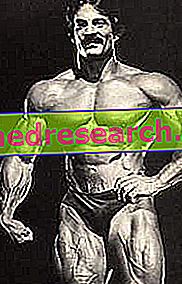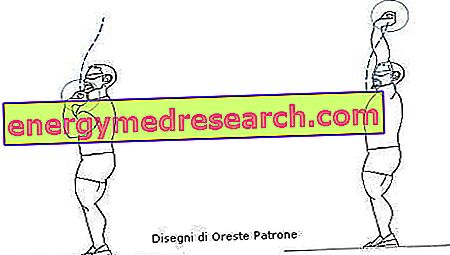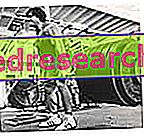See also: General description of the Heavy Duty method and example of a Heavy Duty training card Message sent by: Riccardo Hello Riccardo, As you know, heavy duty is a training technique developed by the late American body builder Mike Menzer. He developed his theories to counter the dominance of Weider techniques in body building
Category training techniques
Edited by Roberto Rillo - Book Author: Calisthenics BodyBuilding A very important muscle group for a massive overall appearance is represented by deltoids, but unfortunately few other muscle groups are so difficult to develop. Perhaps only the calves and forearms have similar difficulties, so the first answer could be: it is a genetic question
Often false alarms are created on strength training for younger people. In reality, there are not many studies in the literature on the benefits and possible risks that such a training can cause. What appears logical and predictable is that going to act with overloads on a bone structure that is still growing can considerably increase the risk of fractures and various traumas
By Dr. Antonio Parolisi The importance of maximal muscle strength in athletes, to increase and reach high levels of muscle building The stresses on the muscular and skeletal system and the relative accumulation of "metabolites" in the muscle, as well as a greater secretion of anabolic hormones, following short-medium-high intensity exercises, determine compensation adjustments that give rise to the phenomenon known as "hypertrophy"
To answer this question it is necessary, as always, to analyze the question from the physiological point of view. why does the force increase? The chart shows the role of the two main components of strength in improving performance: the rapid initial improvement of strength in a subject who starts weight training is at the expense of the nervous component
See also: General description of the Heavy Duty method and example of a Heavy Duty training card Message sent by: Riccardo Hello Riccardo, As you know, heavy duty is a training technique developed by the late American body builder Mike Menzer. He developed his theories to counter the dominance of Weider techniques in body building
The object of discussion is the article: Heavy Duty Message sent by: Giordano Hi, my name is Giordano, I am 35 years old and for at least 12 I train with weights. Until a few years ago I attended a gym, then for various reasons I started training in my garage. I must say that if I could go back I would have made this choice a long time ago
Edited by: Francesco Currò -Increase muscle mass with the German volume system- Recently a new version of the German volume system (GVT) has been proposed in the USA Objectively, the method so pompously proposed some time ago had very little new and dated back several decades ago! For those not familiar, the GVT, broadly speaking, consists in performing - in a given exercise - 10 sets of 10 repetitions with a given weight.
By Dr. Stefano Casali Definition Rational set of more or less complex motor events organized in their structure so as to adapt the athlete's behavior to the characteristics: Tools Some materials The environment Of the opponents Sporting rules Technique teaching Global method When the coordination difficulties are not articulated Analytical method Decomposition of the gesture into several fragments or parts
See also: difference between theory and training science Principles that must always be taken into consideration in training planning PHYSIOLOGICAL ADAPTERS CAUSED BY TRAINING The physiological adaptations of our body in response to training stimuli can be divided into: ANATOMICAL changes: for example the heart changes its shape (increase in cavity, thickness and contractile efficiency leading to greater volume of systolic ejection), the capillary circle becomes richer, muscles grow and adapt, fat mass is reduced









